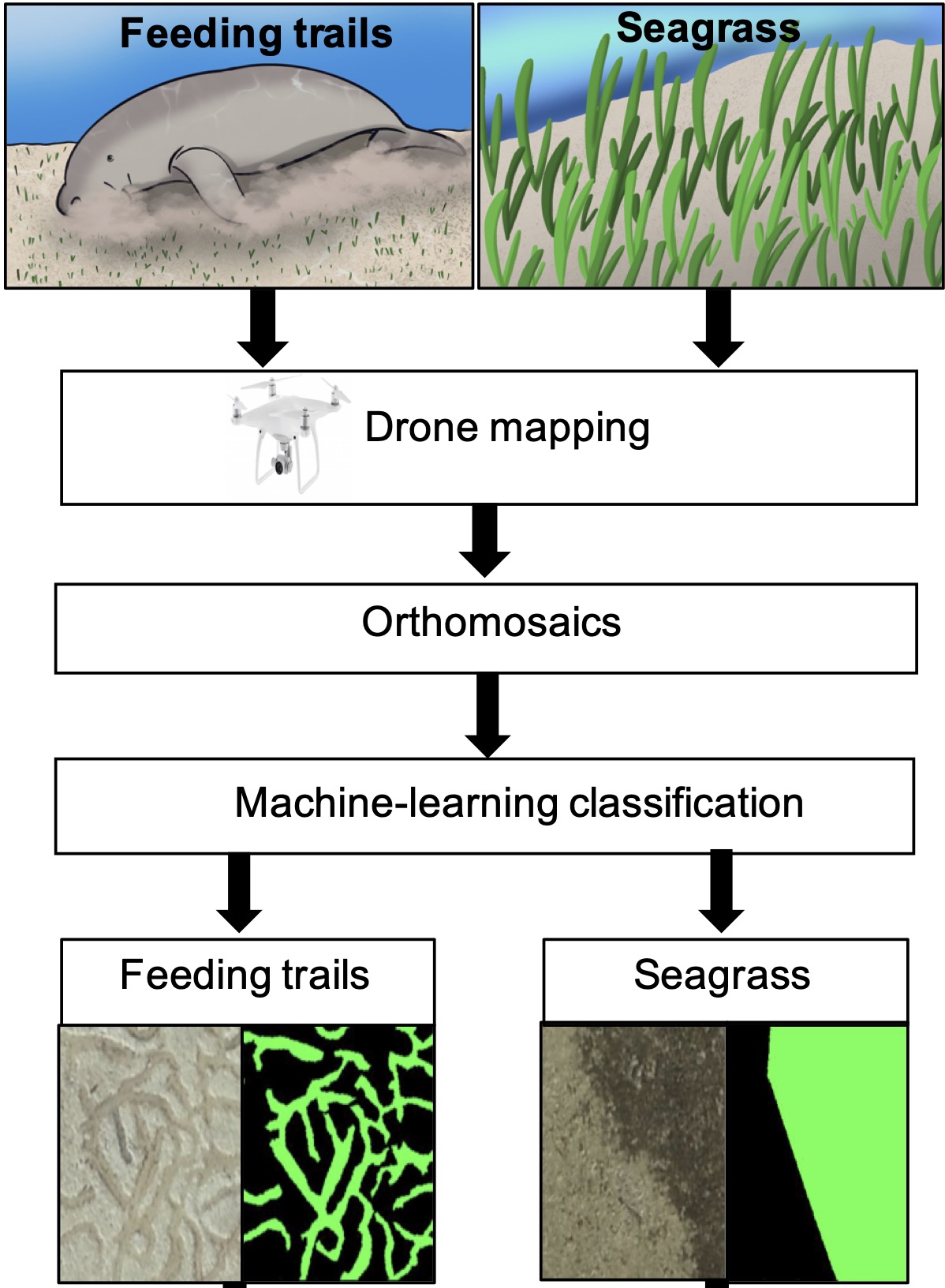Abstract
Fishing provides an important food source for humans, but it also poses a threat to many marine ecosystems and species. Declines in wildlife populations due to fishing activities can remain undetected without effective monitoring methods that guide appropriate management actions. In this study, we combined the use of unmanned aerial vehicle-based imaging (drones) with machine-learning to develop a monitoring method for identifying hotspots of dugong foraging based on their feeding trails and associated seagrass beds.
We surveyed dugong hotspots to evaluate the influence of gillnet fishing activities on dugong feeding grounds at Inhaca Island, Southern Mozambique. The results showed that drones and machine learning can accurately identify and monitor dugong feeding trails and seagrass beds, with an F1 accuracy of 80% and 93.3%, respectively. Feeding trails were observed in all surveyed months with the highest density occurring in August (6,040 ± 4,678 trails/km2)
There was a clear overlap of dugong foraging areas and gillnet fishing grounds, with a statistically significant positive correlation between fishing areas and the frequency of dugong feeding trails. Dugongs were found to feed mostly in Saco East, where the number of gillnet stakes was 3.7 times lower and the area covered by gillnets was 2.6 times lower than in Saco West.
This study highlights the clear potential of drones and machine-learning to study and monitor animal behavior in the wild, particularly in hotspots and remote areas. We encourage the establishment of effective management strategies to monitor and control the use of gillnets, thereby avoiding the accidental bycatch of dugongs.






